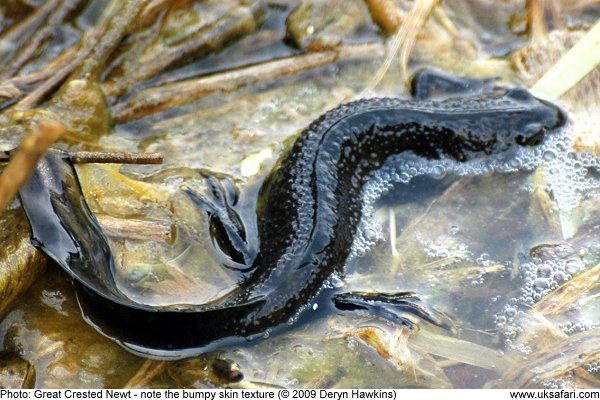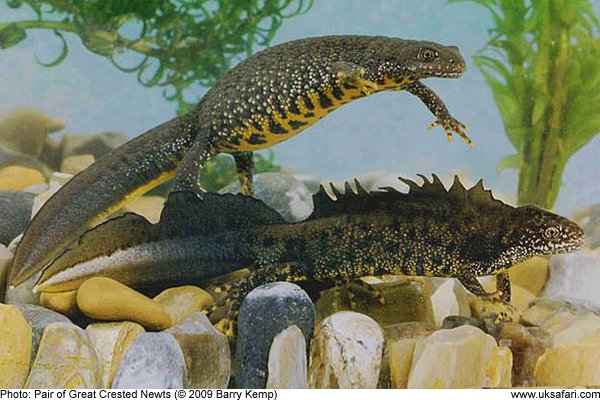 Newts
Newts
News > Newts >

It's that time of year when newts in the UK start making their annual journey back to their ancestral breeding ponds. Already this week there have been sightings of newts plunging into ice cold ponds to start their yearly mating rituals.
For some newts the journey back to water can be a futile one. In recent years many of their ponds have literally disappeared. One of the species hardest hit is the Great Crested Newt. Its numbers have declined so much that it has to have legal protection. This means a person needs to have a license to catch or handle one, and it's illegal to damage their ponds or places of shelter.
It's thought that lower water tables, ponds being filled in for development, farming, waste disposal, pollution and the toxic effects of agrochemicals have all contributed to the decline of our largest UK newt. Fortunately there are a number of conservation projects helping the great crested newt population to recover.
Many ponds with Great Crested newts are being monitored to ensure they are preserved, and new ponds are being created close to existing ponds, where there are already great crested newts. This will enable the newts to migrate to the new ponds, increasing the amount of habitat available for them to breed as spring approaches. These projects inevitably help a number of other species, such as dragonflies and damselflies which rely on ponds for their survival.

Great crested newts can grow up to 16cm long and are generally dark brown to black with a bumpy appearance, which gives the species its other common name, the 'warty newt'. They also have a bright orange underside with black markings which are unique to each individual.
They live in large fishless ponds with abundant weeds feeding on small aquatic invertebrates. Occasionally they will also tackle larger prey such as other newts and dragonflies.
More info at: UK Safari Great-crested Newts Fact File

 Popular Pages
Popular Pages
Amphibians, Bats, Badgers, Beetles, Birds, Birds of Prey, Bumble Bees, Butterflies, Caterpillars, Creepy-Crawlies, Deadly Spiders, Dolphins, Dragonflies, E-Postcards, False Widow Spiders, Free Newsletter, Frogs, Fungi, Garden Spiders, Glow-Worms, Grey Squirrels, Hedgehogs, House Spiders, Ladybirds, Mammals, Marine Mammals, Moths, Owls, Reptiles, Spiders, Toads, Trees, Wildlife Hospitals
© Copyright 2017 G. Bradley - UK Safari | About Us | Links | Contributors



 Related Pages
Related Pages
